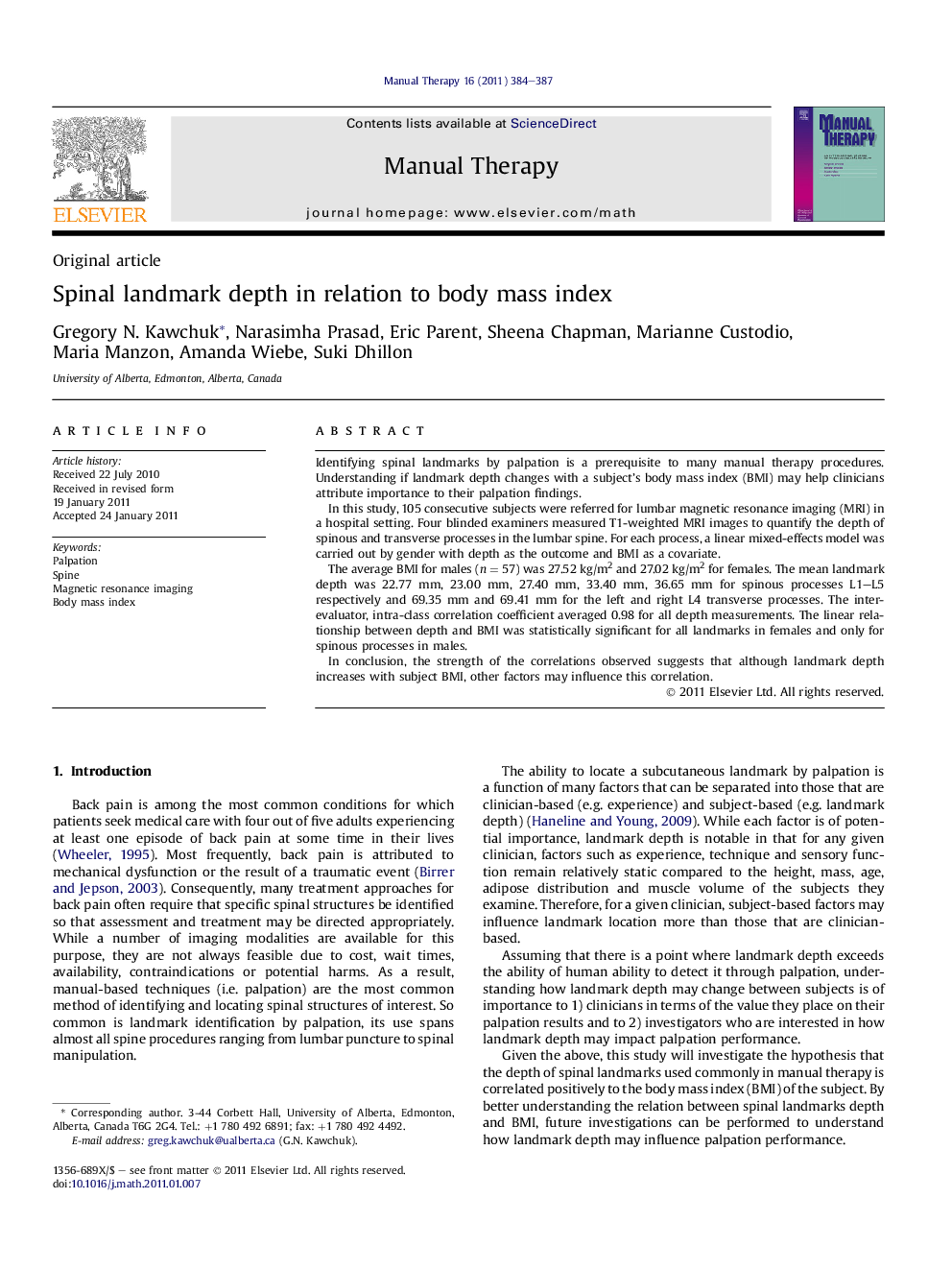| Article ID | Journal | Published Year | Pages | File Type |
|---|---|---|---|---|
| 2625395 | Manual Therapy | 2011 | 4 Pages |
Identifying spinal landmarks by palpation is a prerequisite to many manual therapy procedures. Understanding if landmark depth changes with a subject’s body mass index (BMI) may help clinicians attribute importance to their palpation findings.In this study, 105 consecutive subjects were referred for lumbar magnetic resonance imaging (MRI) in a hospital setting. Four blinded examiners measured T1-weighted MRI images to quantify the depth of spinous and transverse processes in the lumbar spine. For each process, a linear mixed-effects model was carried out by gender with depth as the outcome and BMI as a covariate.The average BMI for males (n = 57) was 27.52 kg/m2 and 27.02 kg/m2 for females. The mean landmark depth was 22.77 mm, 23.00 mm, 27.40 mm, 33.40 mm, 36.65 mm for spinous processes L1–L5 respectively and 69.35 mm and 69.41 mm for the left and right L4 transverse processes. The inter-evaluator, intra-class correlation coefficient averaged 0.98 for all depth measurements. The linear relationship between depth and BMI was statistically significant for all landmarks in females and only for spinous processes in males.In conclusion, the strength of the correlations observed suggests that although landmark depth increases with subject BMI, other factors may influence this correlation.
